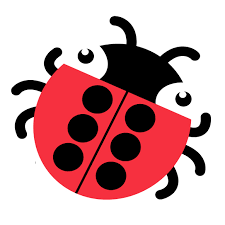


Six tiny, raised dots, inventively arranged by a fifteen-year-old boy nearly two hundred years ago, have brought literacy to thousands of people who are blind or low vision worldwide. Louis Braille, the inventor of the braille code, was born on January 4, 1809. January is celebrated as Braille Literacy Month, and January 4 is World Braille Day.
The information, activities, and games on the Braille Bug website are designed to teach children who are typically sighted about braille and support families raising a child learning braille as well as professionals who may have a braille reader. Children who are blind or low vision also enjoy Braille Bug web activities along with their sighted peers by using adaptive technologies.
It is important that we see braille readers just as we do their peers. Braille Bug promotes the idea that children who are blind or low vision are more similar to their sighted peers than they are different.
As they explore the site, children will be able to:
- develop an appreciation for the versatility of braille
- learn why and how Louis Braille invented the literary braille code
- understand the importance of braille for Helen Keller
- learn to recognize braille letters and numbers
- learn different ways to read and write braille, including the use of technology
- use suggested resources to learn more about braille, blindness, and related topics.
Accessibility of the Braille Bug Site
Children who are blind or low vision can enjoy the activities on the Braille Bug website right along with their sighted classmates.
- Those with low vision have the option of changing the color of the site to increase the contrast. They also may use screen magnification software to enlarge the text and pictures on the screen.
- Braille readers can join games and activities by using a screen reader. This tool reads aloud the screen content, including text and icons. All games are designed for full accessibility. However, objectives may differ for those listening versus those seeing the site. While screen reader users won’t learn braille letters and numbers, they’ll practice navigating with screen readers. This includes selecting options and playing games. For games with braille, alt tags describe each braille character’s dot number, making this a space for everyone to use and engage. For extra screen reader practice, users can try the Jumble Puzzle game, which uses print clues instead of braille.
- Those who read braille may access the screen by using a refreshable braille display.



